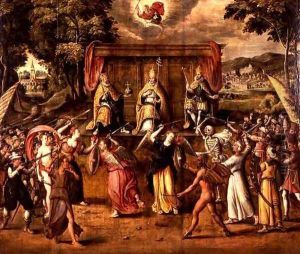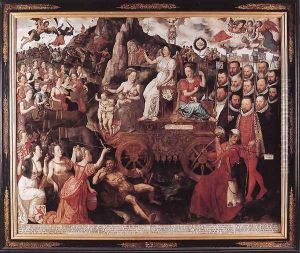Pieter the Younger Claeissens Paintings
Pieter Claeissens the Younger was a Flemish painter born into a family of artists in the city of Bruges, in present-day Belgium, around the year 1535. He was part of a dynasty of painters that spanned across four generations, and the Claeissens family played a significant role in the artistic life of Bruges in the 16th and early 17th centuries. His father, Pieter Claeissens the Elder, was also a painter and was likely his first teacher.
The Claeissens family specialized in religious compositions, portraits, and historical scenes. Pieter the Younger carried on the family tradition, working in a style that was heavily influenced by the Italian Renaissance, which was prevalent during this period. However, there is also a marked influence of the Northern Renaissance in his work, particularly in the attention to detail and the use of vibrant colors.
Unfortunately, much of Pieter the Younger's life and work are not thoroughly documented, and therefore, lesser-known compared to his contemporaries. Despite this, existing records indicate that he was active as a master in the Guild of St. Luke in Bruges from 1561 and held different positions within the guild, suggesting that he was a respected member of the local artistic community.
Pieter Claeissens the Younger's death is estimated to have occurred around the year 1623. His legacy continued through his descendants, who kept the family's artistic tradition alive in Bruges. While his works may not be as widely recognized as those of the most famous Flemish painters of his time, they nonetheless contribute to the rich tapestry of Renaissance art in the Low Countries. His paintings are characterized by their intricate details and the use of light, showcasing the blend of Italianate influences and the Northern European artistic tradition.

